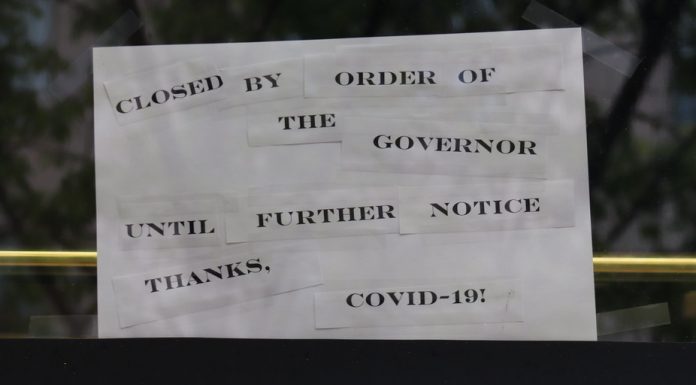(Headline USA) America’s employers added just 12,000 jobs in October, a total that fell well short of the projected 110,000 and resulted in a net deficit for the first time since the height of the COVID-19 pandemic, with nearly four times as many job losses in the manufacturing sector.
JUST IN: Dismal jobs report released showing the U.S. added just 12,000 jobs in October, falling well short of economist estimates of 110,000.
46,000 manufacturing jobs were reportedly lost.
October was the worst month of job growth in nearly four years.
“The government… pic.twitter.com/cUy52zIaTq
— Collin Rugg (@CollinRugg) November 1, 2024
The report may only add more fuel to the growing momentum of GOP nominee Donald Trump’s campaign for re-election, in which he has touted his own pre-COVID economy and heavily emphasized his plan to revitalize American industry through foreign tariffs and domestic tax incentives.
Last month’s hiring gain was down significantly from the 223,000 jobs that were added in September. But some economists claimed that Hurricanes Helene and Milton, combined with strikes at Boeing and elsewhere, caused up to 100,000 jobs to be dropped. Reflecting the impact of the strikes, factories shed 46,000 positions in October.
Friday’s report from the Labor Department also showed that the unemployment rate remained at 4.1% last month.
In a cautionary sign for future hiring, however, temporary job placement firms lost 49,000 jobs last month. Companies often take on temporary workers before committing to full-time employees.
“The cooling of the jobs market is still ongoing,’’ said Sarah House, senior economist at Wells Fargo. “Overall, the jobs market—it’s not falling apart, but it’s too early to say that conditions have stabilized.’’
Healthcare companies added 52,000 jobs in October, and state and local governments tacked on 39,000. But because both sectors include large amounts of taxpayer-subsidized labor, their growth cannot be factored into the overal economic health of the country, as measured by its gross domestic product and other factors.
In fact, the additional government spending to buoy the employment rate may contribute to the inflationary factors that have plagued Democrats since the start of the Biden–Harris administration.
The employment report for October also revised down the government’s estimate of the job gains in August and September by a combined 112,000, indicating that the labor market wasn’t quite as robust then as initially thought—after having used the fraudulent data on economic health to sway the Federal Reserve’s decisions surrounding interest-rate cuts.
“The big one-off shocks that struck the economy in October make it impossible to know whether the job market was changing direction in the month,’’ Bill Adams, chief economist at Comerica Bank, wrote in a commentary. “But the downward revisions to job growth through September show it was cooling before these shocks struck.’’
As voters choose between Trump and Vice President Kamala Harris, large numbers of Americans have said they are unhappy with the state of the economy. Prices quickly surged under the Biden administration’s watch and remain about 20% higher on average than they were before inflation began accelerating in early 2021.
The Fed’s 11 rate hikes in 2022 and 2023 managed to help slow inflation without tipping the economy into a recession. But with the rate of the dollar’s devaluation now approaching its historic norms, the Fed is set to cut its benchmark interest rate next week for a second time, and likely again in December.
In the meantime, there have been signs of a slowdown in the job market. This week, the Labor Department reported that employers posted 7.4 million job openings in September. Though that is still more than employers posted on the eve of the 2020 pandemic, it amounted to the fewest openings since January 2021.
And 3.1 million Americans quit their jobs in September, the fewest in more than four years. A drop in quits tends to indicate that more workers are losing confidence in their ability to land a better job elsewhere.
For employers, a softer job market is easing the labor shortages that left many of them struggling to find and keep workers over the past few years.
Jon Abt, co-president of Abt Electronics in Chicago, said it has become somewhat easier to hire, and his company has felt less pressure to raise wages this year. Still, finding qualified installers and service technicians remains a challenge.
The electronics retailer, which employs 1,750, including 200 part-timers, runs its own training program, works with trade schools to find workers and also receives applicants by referral.
If the job market deteriorates further, Abt said, “it will be easier to find quality people we are looking for.”
Adapted from reporting by the Associated Press

